- What is Lean?| Everything You Need to Know
- What is SAP Workflow? : A Complete Guide
- Difference between Tableau and Power BI | Benefits and Special Features
- Data Warehouse in Tableau | Everything You Need to Know
- What is Tableau Server?| Everything You Need to Know | A Definitive Guide
- What is Dax in Power BI? | A Comprehensive Guide
- Upgrade in Tableau Desktop and Web Authoring | A Complete Guide with Best Practices
- What is SAP HANA | SAP HANA Database Connection | All you need to know [ OverView ]
- SAP BPC – What is Business Planning and Consolidation? : All you need to know [ OverView ]
- Root Cause Analysis: Definition, Examples & Methods | All you need to know [ OverView ]
- Seven Basic Quality Improvement Ishikawa Tools | Important asset to control quality in your project [OverView]
- What is Power BI | Its Use Cases and Applications | All you need to know [ OverView ]
- How and why to measure and analyze employee productivity | Everything You Need to Know
- Top 10 Employee Retention Strategies | Everything You Need to Know
- What are LookML Projects and the Developer Mode | How to Create LookML Projects?
- What are Slowly Changing Dimension | SCD Types and Implementations | Step-By-Step Process
- What is Pareto Chart and How to Create Pareto Chart | A Complete Guide For Beginners
- What does an Agile Business Analyst do | Required Skills, Roles and Responsibilities [ Job & Future ]
- What is Lean Management? | Role and Concepts of Lean Management | Expert’s Top Picks
- A Definitive Guide of Working Capital Management with Best Practices & REAL-TIME Examples
- Business Analytics with Excel Fundamentals | A Complete Guide For Beginners
- Business Analyst : Job Description | All you need to know [ Job & Future ]
- How to create a Splunk Dashboard | A Complete Guide For Beginners [ OverView ]
- What is Splunk Logging ? | The Ultimate Guide with Expert’s Top Picks
- Alteryx vs Tableau | Know Their Differences and Which Should You Learn?
- What is Predictive Analytics? : Step-By-Step Process with REAL-TIME Examples
- An Overview of SAS Stored Processes | The Ultimate Guide with Expert’s Top Picks
- How to Create Conditional Formatting in Cognos Report Studio | A Complete Guide
- Difference between OLTP vs OLAP | Know Their Differences and Which Should You Learn?
- ECBA vs CCBA vs CBAP | A Complete Guide For Beginners | Know Their Differences and Which Should You Learn?
- Import Custom Geocode Data in Tableau | Everything You Need to Know [ OverView ]
- Data Warehouse Tools : Features , Concepts and Architecture
- PGDM vs MBA | Know Their Differences and Which Should You Learn?
- Most Popular Data Visualization Tools | A Complete Beginners Guide | REAL-TIME Examples
- Tableau vs Looker : Comparision and Differences | Which Should You Learn?
- Benefits of Employee Satisfaction for the Organization [ Explained ]
- DAX In Power BI – Learn Power BI DAX Basics [ For Freshers and Experience ]
- Power Bi vs Tableau : Comparision and Differences | Which Should You Learn?
- What is Alteryx Tools | Alteryx ETL Tools | Comprehensive Guide
- What is Tableau Prep? : Comprehensive Guide | Free Guide Tutorial & REAL-TIME Examples
- What are Business Intelligence Tools ? : All you need to know [ OverView ]
- Tableau Aggregate Functions | A Complete Guide with REAL-TIME Examples
- Intervalmatch Function in Qlikview | Everything You Need to Know [ OverView ]
- QlikView Circular Reference | Free Guide Tutorial & REAL-TIME Examples
- Data Blending in Tableau | A Complete Guide with Best Practices | Free Guide Tutorial [ OverView ]
- Splunk vs ELK | Differences and Which Should You Learn? [ OverView ]
- QlikSense vs QlikView | Differences and What to learn and Why?
- What Is Measurement System Analysis | Required Skills | Everything You Need to Know
- Splunk Timechart | Free Guide Tutorial & REAL-TIME Examples
- What Is Image Processing ? A Complete Guide with Best Practices
- What is a Business Analysis ? A Complete Guide with Best Practices
- Top Business Analytics Tools | Comprehensive Guide
- Business Analyst Career Path [ Job & Future ]
- Time Series Analysis Tactics | A Complete Guide with Best Practices
- What is Splunk ? Free Guide Tutorial & REAL-TIME Examples
- Which Certification is Right for You: Six Sigma or Lean Six Sigma?
- SAS Vs R
- Top Technology Trends for 2020
- Data Analyst vs. Data Scientist
- What are the Essential Skills That You Need to Master in Data Analyst?
- What is Six Sigma?
- Common Cause Variation Vs Special Cause Variation
- Reasons to Get a Six Sigma Certification
- What Is Strategic Enterprise Management and its Components?
- What Are The Benefits Measurement Constrained Optimization Methods?
- What Is the Benefit of Modern Data Warehousing?
- What Is Corporate Social Responsibility (CSR)?
- What Is The Purpose and Importance Of Financial Analysis?
- What is Insights-as-a-Service (IaaS)?
- Business Analytics With R Programming Languages
- Where Are The 8 Hidden Wastes?
- What Are Market Structures?
- What is Cost of Quality (COQ)?
- What is Build Verification Testing?
- Quality Improvement in Six Sigma
- What is Process Capability Analysis?
- How To Measure The Effectiveness Of Corporate Training
- SAP Financials And SAP Accounting Modules
- Tips to Learn Tableau
- Why Should I Become a CBAP?
- History And Evolution of Six Sigma
- How to use Control Chart Constants?
- Data Analytics Course For Beginners
- How to Build a Successful Data Analyst Career?
- Data Analytics Vs Business Analytics
- What is SAP Certification?
- Books To Read For a Six Sigma Certification
- Six Sigma Green Belt Salary
- What is the ASAP Methodology?
- Complete list of SAP modules
- What is Lean?| Everything You Need to Know
- What is SAP Workflow? : A Complete Guide
- Difference between Tableau and Power BI | Benefits and Special Features
- Data Warehouse in Tableau | Everything You Need to Know
- What is Tableau Server?| Everything You Need to Know | A Definitive Guide
- What is Dax in Power BI? | A Comprehensive Guide
- Upgrade in Tableau Desktop and Web Authoring | A Complete Guide with Best Practices
- What is SAP HANA | SAP HANA Database Connection | All you need to know [ OverView ]
- SAP BPC – What is Business Planning and Consolidation? : All you need to know [ OverView ]
- Root Cause Analysis: Definition, Examples & Methods | All you need to know [ OverView ]
- Seven Basic Quality Improvement Ishikawa Tools | Important asset to control quality in your project [OverView]
- What is Power BI | Its Use Cases and Applications | All you need to know [ OverView ]
- How and why to measure and analyze employee productivity | Everything You Need to Know
- Top 10 Employee Retention Strategies | Everything You Need to Know
- What are LookML Projects and the Developer Mode | How to Create LookML Projects?
- What are Slowly Changing Dimension | SCD Types and Implementations | Step-By-Step Process
- What is Pareto Chart and How to Create Pareto Chart | A Complete Guide For Beginners
- What does an Agile Business Analyst do | Required Skills, Roles and Responsibilities [ Job & Future ]
- What is Lean Management? | Role and Concepts of Lean Management | Expert’s Top Picks
- A Definitive Guide of Working Capital Management with Best Practices & REAL-TIME Examples
- Business Analytics with Excel Fundamentals | A Complete Guide For Beginners
- Business Analyst : Job Description | All you need to know [ Job & Future ]
- How to create a Splunk Dashboard | A Complete Guide For Beginners [ OverView ]
- What is Splunk Logging ? | The Ultimate Guide with Expert’s Top Picks
- Alteryx vs Tableau | Know Their Differences and Which Should You Learn?
- What is Predictive Analytics? : Step-By-Step Process with REAL-TIME Examples
- An Overview of SAS Stored Processes | The Ultimate Guide with Expert’s Top Picks
- How to Create Conditional Formatting in Cognos Report Studio | A Complete Guide
- Difference between OLTP vs OLAP | Know Their Differences and Which Should You Learn?
- ECBA vs CCBA vs CBAP | A Complete Guide For Beginners | Know Their Differences and Which Should You Learn?
- Import Custom Geocode Data in Tableau | Everything You Need to Know [ OverView ]
- Data Warehouse Tools : Features , Concepts and Architecture
- PGDM vs MBA | Know Their Differences and Which Should You Learn?
- Most Popular Data Visualization Tools | A Complete Beginners Guide | REAL-TIME Examples
- Tableau vs Looker : Comparision and Differences | Which Should You Learn?
- Benefits of Employee Satisfaction for the Organization [ Explained ]
- DAX In Power BI – Learn Power BI DAX Basics [ For Freshers and Experience ]
- Power Bi vs Tableau : Comparision and Differences | Which Should You Learn?
- What is Alteryx Tools | Alteryx ETL Tools | Comprehensive Guide
- What is Tableau Prep? : Comprehensive Guide | Free Guide Tutorial & REAL-TIME Examples
- What are Business Intelligence Tools ? : All you need to know [ OverView ]
- Tableau Aggregate Functions | A Complete Guide with REAL-TIME Examples
- Intervalmatch Function in Qlikview | Everything You Need to Know [ OverView ]
- QlikView Circular Reference | Free Guide Tutorial & REAL-TIME Examples
- Data Blending in Tableau | A Complete Guide with Best Practices | Free Guide Tutorial [ OverView ]
- Splunk vs ELK | Differences and Which Should You Learn? [ OverView ]
- QlikSense vs QlikView | Differences and What to learn and Why?
- What Is Measurement System Analysis | Required Skills | Everything You Need to Know
- Splunk Timechart | Free Guide Tutorial & REAL-TIME Examples
- What Is Image Processing ? A Complete Guide with Best Practices
- What is a Business Analysis ? A Complete Guide with Best Practices
- Top Business Analytics Tools | Comprehensive Guide
- Business Analyst Career Path [ Job & Future ]
- Time Series Analysis Tactics | A Complete Guide with Best Practices
- What is Splunk ? Free Guide Tutorial & REAL-TIME Examples
- Which Certification is Right for You: Six Sigma or Lean Six Sigma?
- SAS Vs R
- Top Technology Trends for 2020
- Data Analyst vs. Data Scientist
- What are the Essential Skills That You Need to Master in Data Analyst?
- What is Six Sigma?
- Common Cause Variation Vs Special Cause Variation
- Reasons to Get a Six Sigma Certification
- What Is Strategic Enterprise Management and its Components?
- What Are The Benefits Measurement Constrained Optimization Methods?
- What Is the Benefit of Modern Data Warehousing?
- What Is Corporate Social Responsibility (CSR)?
- What Is The Purpose and Importance Of Financial Analysis?
- What is Insights-as-a-Service (IaaS)?
- Business Analytics With R Programming Languages
- Where Are The 8 Hidden Wastes?
- What Are Market Structures?
- What is Cost of Quality (COQ)?
- What is Build Verification Testing?
- Quality Improvement in Six Sigma
- What is Process Capability Analysis?
- How To Measure The Effectiveness Of Corporate Training
- SAP Financials And SAP Accounting Modules
- Tips to Learn Tableau
- Why Should I Become a CBAP?
- History And Evolution of Six Sigma
- How to use Control Chart Constants?
- Data Analytics Course For Beginners
- How to Build a Successful Data Analyst Career?
- Data Analytics Vs Business Analytics
- What is SAP Certification?
- Books To Read For a Six Sigma Certification
- Six Sigma Green Belt Salary
- What is the ASAP Methodology?
- Complete list of SAP modules

What are the Essential Skills That You Need to Master in Data Analyst?
Last updated on 14th Oct 2020, Artciles, Blog, Business Analytics
What is Data Analytics?
At a mile-high view, Data Analytics is the process of gathering large amounts of data from various sources and manipulating it to extract valuable insights and make more informed decisions. This is done by scrubbing the data and applying algorithmic processes to find patterns, trends, correlations, and aberrations. The goal is to come up with actionable conclusions to improve business and organizational outcomes.
What is a Data Analyst?
To put it simply, a data analyst is someone who uses technical skills to analyze data and report insights.
On a typical day, a data analyst might use SQL skills to pull data from a company database, use programming skills to analyze that data, and then use communication skills to report their results to a larger audience.
It’s a fulfilling job that pays well. Being a data analyst also provides experience that can be beneficial for stepping into more advanced roles like data scientist.
So You Want to be a Data Analyst
You’ve decided you want to be a data analyst. Or maybe your goal is to be a data scientist, but you know many entry-level jobs are analyst roles. In either case, you’re going to need to master data analyst skills to get you where you want to go.
But what are those skills? What are the things you need to know? In this article, you’ll learn the eight key skills you’ll need to get a job as a data analyst.
We’ll be focusing on skills and not on tools (like Python, R, SQL, Excel, Tableau, etc.) Our focus will be what you’ll need to do as a data analyst, not how you do those things.
Tools — the how — will vary depending on the exact role, the company that hires you, and the industry you end up working in. You can take the data analyst skills from this article and apply them using the tools that you’re learning with, or that suit the industry you’re looking to break into.
The research for this article was taken from the planning for our Dataquest Data Analyst paths. To make sure we teach the right mix of skills, we did a lot of research to understand what data analysts really do.
This research included interviews with data analysts, data scientists, and recruiters/hiring managers for data roles. We also conducted a review of existing research on the topic.
Subscribe For Free Demo
Error: Contact form not found.
1: Data Cleaning and Preparation
Research shows that data cleaning and preparation accounts for around 80% of the work of data professionals. This makes it perhaps the key skill for anyone serious about getting a job in data.
Commonly, a data analyst will need to retrieve data from one or more sources and prepare the data so it is ready for numerical and categorical analysis. Data cleaning also involves handling missing and inconsistent data that may affect your analysis.
Data cleaning isn’t always considered “sexy”, but preparing data can actually be a lot of fun when treated as a problem-solving exercise. In any case, it’s where most data projects start, so it’s a key skill you’ll need if you’re going to become a data analyst.

2: Data Analysis and Exploration
It might sound funny to list “data analysis” in a list of required data analyst skills. But analysis itself is a specific skill that needs to be mastered.
At its core, data analysis means taking a business question or need and turning it into a data question. Then, you’ll need to transform and analyze data to extract an answer to that question.
Another form of data analysis is exploration. Data exploration is looking to find interesting trends or relationships in the data that could bring value to a business.
Exploration might be guided by an original business question, but it also might be relatively unguided. By looking to find patterns and blips in the data, you may stumble across an opportunity for the business to decrease costs or increase growth!
3: Statistical Knowledge
A strong foundation in probability and statistics is an important data analyst skill. This knowledge will help guide your analysis and exploration and help you understand the data that you’re working with.
Additionally, understanding stats will help you make sure your analysis is valid and will help you avoid common fallacies and logical errors.
The exact level of statistical knowledge required will vary depending on the demands of your particular role and the data you’re working with. For example, if your company relies on probabilistic analysis, you’ll need a much more rigorous understanding of those areas than you would otherwise.
4: Creating Data Visualizations
Data visualizations make trends and patterns in data easier to understand. Humans are visual creatures, and most people aren’t going to be able to get meaningful insight by looking at a giant spreadsheet of numbers. As a data analyst, you’ll need to be able to create plots and charts to help communicate your data and findings visually.
This means creating clean, visually compelling charts that will help others understand the data. It also means avoiding things that are either difficult to interpret (like pie charts) or can be misleading (like manipulating axis values).
Visualizations can also be an important part of data exploration. Sometimes there are things that you can see visually in the data that can hide when you just look at the numbers.
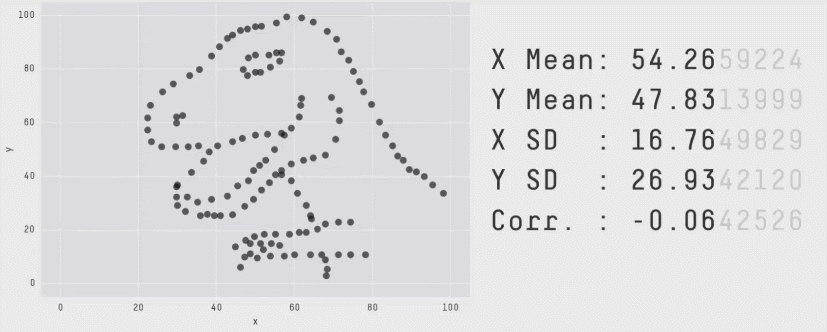
Data with the same statistics can produce radically different plots (source)
It’s very rare to find data role that doesn’t require data visualization, making it a key data analyst skill.
5: Creating Dashboards and/or Reports
As a data analyst, you’ll need to empower others within your organization to use data to make key decisions. By building dashboards and reports, you’ll be giving others access to important data by removing technical barriers.
This might take the form of a simple chart and table with date filters, all the way up to a large dashboard containing hundreds of data points that are interactive and update automatically.
Job requirements can vary a lot from position to position, but almost every data analyst job is going to involve producing reports on your findings and/or building dashboards to showcase them.
6: Writing and Communication Skills
The ability to communicate in multiple formats is a key data analyst skill. Writing, speaking, explaining, listening— strong communication skills across all of these areas will help you succeed.
Communication is key in collaborating with your colleagues. For example, in a kickoff meeting with business stakeholders, careful listening skills are needed to understand the analyses they require. Similarly, during your project, you may need to be able to explain a complex topic to non-technical teammates.
Written communication is also incredibly important — you’ll almost certainly need to write up your analysis and recommendations.
Being clear, direct, and easily understood is a skill that will advance your career in data. It may be a “soft” skill, but don’t underestimate it — the best analytical skills in the world won’t be worth much unless you can explain what they mean and convince your colleagues to act on your findings.
7: Domain Knowledge
Domain knowledge is understanding things that are specific to the particular industry and company that you work for. For example, if you’re working for a company with an online store, you might need to understand the nuances of e-commerce. In contrast, if you’re analyzing data about mechanical systems, you might need to understand those systems and how they work.
Domain knowledge changes from industry to industry, so you may find yourself needing to research and learn quickly. No matter where you work, if you don’t understand what you’re analyzing it’s going to be difficult to do it effectively, making domain knowledge a key data analyst skill.
This is certainly something that you can learn on the job, but if you know a specific industry or area you’d like to work in, building as much understanding as you can up front will make you a more attractive job applicant and a more effective employee once you do get the job.
8: Problem-Solving
As a data analyst, you’re going to run up against problems, bugs, and roadblocks every day. Being able to problem-solve your way out of them is a key skill.
You might need to research a quirk of some software or coding language that you’re using. Your company might have resource constraints that force you to be innovative in how you approach a problem. The data you’re using might be incomplete. Or you might need to perform some “good enough” analysis to meet a looming deadline.
Whatever the circumstances, strong problem-solving skills are going to be an incredible asset for any data analyst.
9. Other Data Analyst Skills
The exact definition of “data analyst” varies a lot depending on whom you ask, so it’s possible not all of these skills will be required for every data analyst job.
Similarly, there may be skills some companies will require that aren’t on this list. Our focus here was to find the set of skills that most data analyst roles require in order to build the very best data analyst learning paths for our students.
10 Key Skills That Data Analysts Need to Master
Every single day, we answer questions about data analyst skills. Some people ask me, “I only know how to use Excel and make analysis charts since I started. To me, data analyst seems to be an analyst of business data, and I don’t know how to improve myself.”
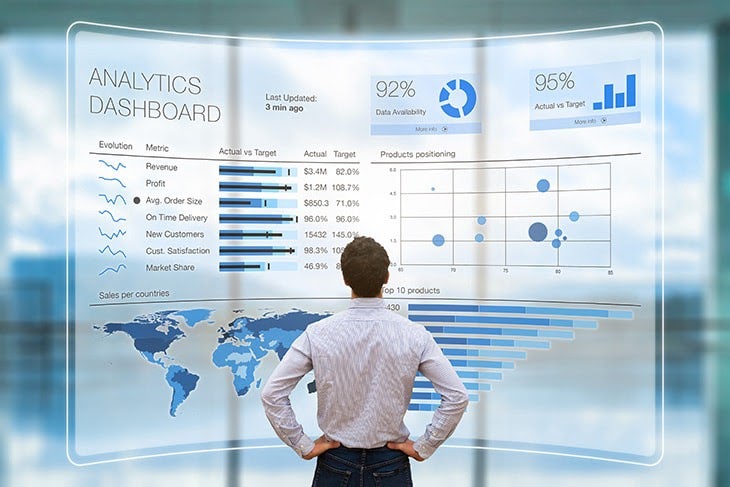
This is because he did not fully dig out the value of big data analysis. Data analysis is to optimize products, marketing strategies, and operation strategies through discovering the data. Only knowing the business is not enough, the more important is to master various skills of data analysis. Based on my years of experience, I summarized ten skills that a qualified and senior data analyst must master.
- Statistics:law of large numbers, rank sum test, regression, forecast
- Data Visualization Tools: excel, professional software, python
- Big Data Processing Framework: Hadoop, storm, spark
- Databases: SQL, MySql, DB
- Data Warehouse:SSIS、SSAS
- Artificial Intelligence
- Machine learning
- Data Mining Skills: Matlab, R, python
- Programming Language: Java, python
- Write Reports
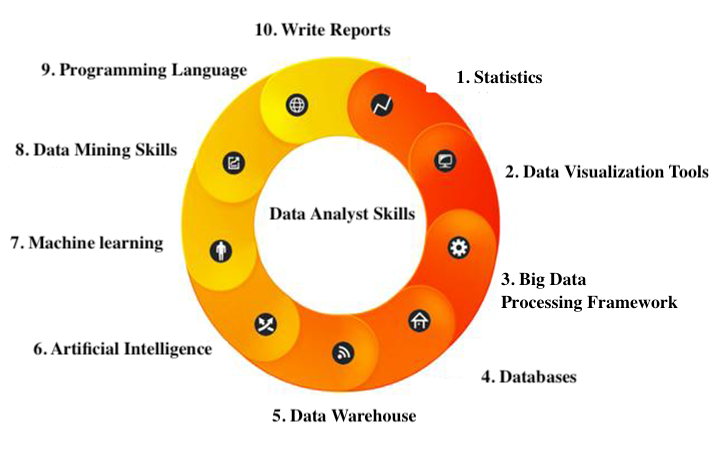
1.Statistics
As we all know, statistics is the cornerstone of data analysis. Statistics, of course, is also a core skill of data analysts. After you study statistics, you will find that in many cases, the analysis is not so accurate. For example, many people like to use the average to analyze the results, but this is often rough. Statistics can help us look at the data more scientifically and gradually get closer to the “truth” behind the data.
Systematic learning is the key point to learn statistics well. Pure machine learning emphasizes the predictive ability and implementation of algorithms, but statistics have always emphasized interpretability. You need to understand the principles behind the data. The following statistical methods are all you can learn.
- Statistical methods related to data mining: multivariate logistic regression analysis, nonlinear regression analysis, discriminant analysis, etc.
- Quantitative methods: time axis analysis, probability model, optimization
- Decision analysis: multi-purpose decision analysis, decision tree, influence diagrams, sensitivity analysis
- Analysis of competitive advantages: learning basic analytical concepts through projects and success cases
- Database principles: data model, database design
- Predictive analysis: time axis analysis, principal component analysis, nonparametric regression, statistical process control
- Data management: ETL (Extract, Transform, Load), data governance, management responsibility, metadata
- Optimization and heuristics: integer programming, nonlinear programming, local exploration, super-inspiration (simulated annealing, genetic algorithm)
- Big data analysis: learning of unstructured data concepts, MapReduce technology, big data analysis methods
- Data mining: clustering (k-means method, segmentation method), association rules, factor analysis, survival time analysis
- Computer simulation of risk analysis and operational analysis
- Software-level analytics: analytical topics at the organizational level, IT and business users, change management, data topics, presentation, and communication
2.Data Visualization Tools
Data visualization is mainly realized through two types of tools: programming and non-programming. For data analysts in the general industry, it is not necessary to master the visual tools of programming. I will recommend the following tools:
2.1 Excel
Excel is a common data display tool. For data analysts, skills need to master in Excel includes being proficient in presenting data in Excel charts and knowing how to set formats for a series of generated charts.
Learning excel is a gradual process. For example, beautify series format, enhance 3d format, set the axis and grid.
Charts can be used in conjunction with functions or macros to produce analog charts or advanced charts with interactive effects, such as population distribution of cities and counties on a map, for better data analysis and viewing.
The data analysis function in Excel can largely complete the data analysis of professional statistical software (R, SPSS, SAS, Matlab), including descriptive statistics, correlation coefficient, probability distribution, mean estimation, linear, nonlinear regression, multiple regression analysis, time series, and other contents.
Familiarity with the various features of Excel is essential for a good data analyst.
2.2 Professional software
Data visualization tools like D3.js, HighCharts, Tableau and PowerBI all have their advantages. You must be proficient in at least one visualization tool.
In my case, I often use FineReport at work. As a reporting and data visualization software, FineReport has two core functions: data entry and data display. However, I think it is quite surprising that it has a large number of built-in charts and visualized dynamic effects. It can make a variety of dashboards in various formats, and even a large screen like TV dashboards.
2.3 Python
Those who have learned Python data analysis know that there are many excellent third-party libraries in visual tools, such as matplotlib, seaborn, plotly, Boken, pyecharts, etc. These visual libraries have their advantages and are widely used in practical applications. Mastering Python will be the right choice as data analyst skills.
3.Big Data Processing Framework
If you want to be released from the business and become a big data analyst, understanding the basics of the big data framework is also the required skill for data analysts.
A big data processing framework is responsible for calculating the data of a big data system. Data includes data read from persistent storage or access to the system through message queues, while computation is the process of extracting information from the data.
The system can be classified as a batch processing system, stream processing system, and hybrid system according to the data form and timeliness of the obtained results. A typical batch processing system is Apache Hadoop; The Typical stream processing system includes Apache Storm, Apache Samza; Apache Spark, Apache Flink are Hybrid processing systems.
4.Databases
Some data analysts are responsible for data cleaning, which is relatively simple. Some others do molding, but it is not enough to master machine learning algorithms that commonly used if you want to be outstanding. To be first-class, we need to learn the essence of each algorithm, that is, to master the foundation of the database.
SQL is the core technology in the database. You need to pay attention to it when learning the data analysis.
Currently, MySQL, SQL Server, and Oracle are still the most widely used databases. The followings are the statements and functions data analysts must know.
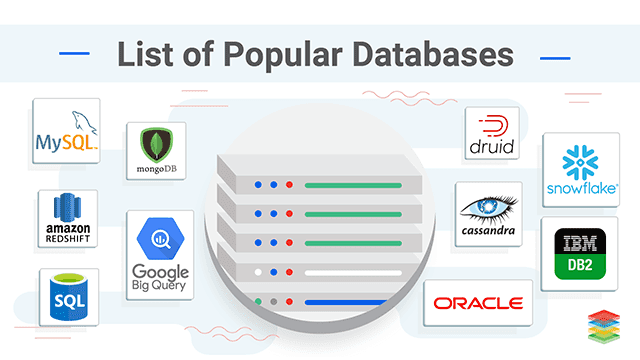
5.Data Warehouse
When analyzing data, we always come across some terms, such as data warehouses. The data warehouse is vital in data analysis. It is a theme-oriented, integrated, relatively stable data set that reflects historical changes.
The most important in data analysis work is data processing. According to my experience as a data analyst, the time for data processing often takes up more than 70% in the whole process of data analysis. And the data warehouse has the benefits of integration, stability, high quality. Doing data analysis based on the data warehouse can ensure data quality and data integrity. That is why understanding data warehouses is one of the data analysts’ skills.
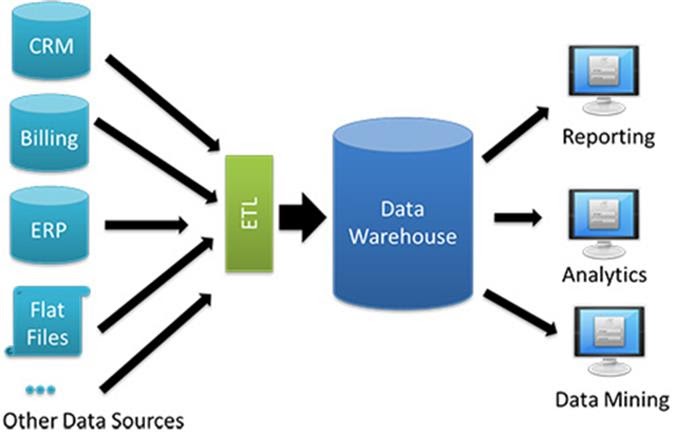
6.Artificial Intelligence (for advanced data analysts)
Strictly speaking, artificial intelligence and data analysis have a clear boundary. They do not belong to the same field. Therefore, this skill is required for big data analysis scientists. You can skip this chapter if you are a newbie.
The knowledge covered by machine learning and artificial intelligence is too broad and deep, so it is better to adopt the learning method of problem-based learning. First, select the problem. Then, find resources to solve the problem and further understand the nouns and knowledge encountered in the process of solving the problem.

7.Machine learning
Machine learning is a branch of artificial intelligence. Machine learning algorithms are a class of algorithms that automatically analyze and obtain rules from data and use rules to predict unknown data. It has been widely used in data mining, computer vision, natural language processing, search engine, medical diagnosis, securities market analysis, and other fields.

8.Data Mining Skills
Operating data mining software is one of the necessary skills for data analysts. It is the core application of most business intelligence initiatives, and data mining software can help you discover insights from large amounts of data
Mastering development skills and the advanced algorithm leads to the perfect data mining skills for data analysts. Many people it is hard. In fact, the algorithm is not complicated. It will be much easier when you combine algorithm with an actual business background and be problem-solving oriented.
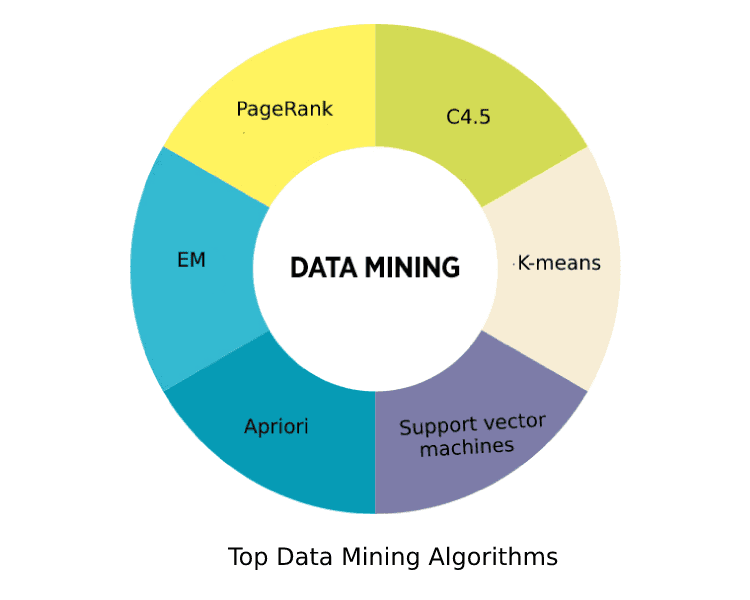
The mainly including classification algorithm, clustering algorithm, correlation analysis, connection analysis, etc., is the study that must be mastered the basic algorithm of data mining.
Three books you can’t miss:
- Pattern Recognition and Machine Learning
- The Elements of Statistical Learning
- Machine Learning
9. Programming Language
Proficiency in some programming languages can make data analysis work more flexible. Programming languages are suitable for all types of data. Most of the new and amazing dashboards can be implemented with code or drawing software.
Which language to choose? It depends on the situation,
If you do massive data analysis on the obscure statistics, R will be your best partner. If you do NLP or intensive neural network processing across the GPU, Python is better. If you want a rugged, production-oriented data flow solution with all the important operational tools, Java or Scala is a perfect choice.
Take R as an instance. The R language is the most favorite analysis software for the statisticians. It is open-source and free, and its graphics function is very powerful.
R is designed for data analysis. And it was initially intended for statisticians and data scientists. However, due to the increasing popularity of data analysis, the use of the R language is not limited.
The use flow of R is obvious. Many toolkits support R. Just load the data into R and write one or two lines of code to create the data graph. For example, use the Portfolio toolkit to create the following hierarchy diagram quickly.
10. Write Reports
The ability to write reports is also one of the critical analyst skills.
Writing data analysis reports is summarizing and presenting the whole process of data analysis. Through the report, the causes, process, results, and advice of the data analysis are fully presented for the consideration of decision-makers.
So, What is a good data analysis report?
An excellent analysis report must have a good analytical framework, a definite conclusion, suggestions or solutions.
Data Analyst Qualifications
Generally speaking, employers will expect data analysts to have a bachelors degree in something, and a degree in a quantitative/STEM field may help. However, a degree is not required. Data analysts are in high demand, and employers are concerned primarily with an applicant’s actual skills — if you have the right skills and the projects to prove it, you can get a data analyst job without a degree.
People often ask whether some kind of data science certificate is required or helpful for getting jobs in data. The answer is no. Employers are primarily concerned with skills, and when we spoke to dozens of people who hire in this field, not a single one of them mentioned wanting to see certificates.
Certificate programs can be helpful if they teach you necessary skills, but employers aren’t going to be scanning your resume looking for a data analyst certificate. Nor are they likely to care much about any certificates you’ve earned. They’ll be looking for proof of actual skills.
Data Analyst Requirements
Above, we’ve talked about the skills data analysts need, and we’ve explained why you probably don’t need any paper qualifications to become a data analyst.
What you do need, though, is proof of the skills you have. Simply listing that you know SQL and Python on your resume is not enough, even if those are the job requirements listed in the job posting. You need to prove you have those skills.
The easiest way to do this is with prior work experience, of course — if an employer can see you’ve already worked as a data analyst, and call up your old boss for confirmation, you’re in good shape.
But if you’re reading this article, you probably don’t have prior experience in the field. In that case, what you need is a portfolio of data analysis projects that potential employers can peruse. Having an active Github account with relevant projects (and linking to this account from your resume) is probably the quickest and easiest way to set up a portfolio.
The projects you showcase should be your best, and they should demonstrate that you have the skills listed in this article. Use a format like a Jupyter Notebook or R Markdown document to showcase your code along with written explanations and charts that a non-technical hiring manager or recruiter can understand. (Remember, you need to be showcasing your communication skills in addition to the technical skills you used to do the analysis).
The more relevant you can make these projects to the companies where you’re applying, the better your chances will be of getting a call back.
Becoming a Data Analyst, Step by Step
If you’re serious about becoming a data analyst and you’re starting from scratch, don’t worry! You can do this. It helps to take a step-by-step approach.
- 1. Learn the basics of programming in R or Python. At Dataquest, our data analyst learning paths in Python and R are designed to help you start from scratch, even if you’ve never written a line of code before.
- 2. Start building projects. As early as possible, start putting together data projects. These early projects will help you solidify the skills you’re learning and keep you motivated. You should keep building projects of increasing difficulty and complexity as you work through the later steps here (Dataquest’s learning paths have built-in guided projects to help with this).
- 3. Add more advanced technical skills. At Dataquest, our data analyst learning paths will take you through all of these skills in a logical sequence, so each skill builds on the previous one and you don’t have to worry about what to learn next. But if you’re learning with some other resource, be sure to cover: SQL, statistics, the command line, and Git (in addition to data-specific programming skills and packages used in your language of choice).
- 4. Share your work and engage with the community. This will help you learn, collaborate, and start building a “personal brand” as a data analyst. Sharing your work can feel intimidating, but you never know what kinds of job offers can come from the right person happening to come across a cool project you’ve shared.
- 5. Push your boundaries. Once you’ve mastered the basics, be sure you keep pushing with your projects so that you’re learning new skills. Don’t fall into the trap of doing similar projects over and over again because you’re comfortable doing them. Try to include at least one thing you’ve never done before in each new project, or go back to old projects and try to improve them or add complexity.
You Can Become a Data Analyst!
In this article, we’ve covered what you need to learn to become a data analyst. If you want to learn the how, and build the technical skill set you need to successfully get a data analyst job, check out our interactive online data analysis courses.
Without ever leaving your web browser, you’ll write real code to analyze real-world data as you learn interactively using our proven approach.
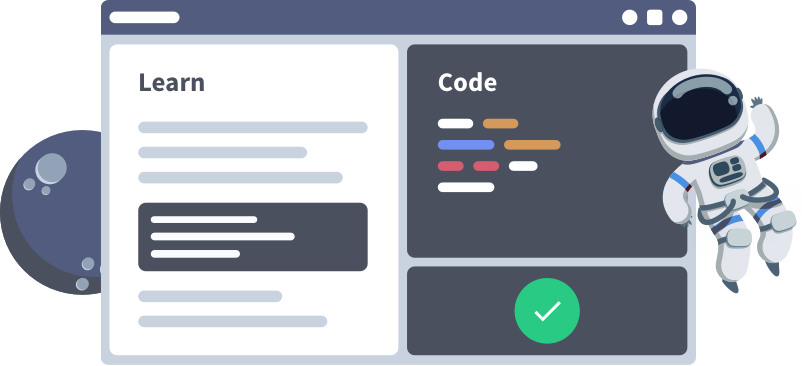
At Dataquest, our vision is to become the world’s first option for learning data skills. In order to achieve that, we craft our curriculum to teach the students the skills students they need to get jobs in data.
Essential Skills to Become a Data Analyst
To launch your career in data analysis, there are several skills to master and data analysis tools to leverage.
Programming
The most common languages used in data analyst roles are R and Python. These languages can be broken down into two categories: statistical and scripting, based on whether compilation must occur before running. Other useful languages include Java, SAS, MATLAB, SQL, Tensorflow, Scala, and Julia.
Math
Data analyst jobs require basic math skills, specifically in statistics. While it’s better to use a powerful scripting language like R for huge datasets, the statistical capabilities of Microsoft Excel can handle smaller ones.
Data Processing Platforms
For large datasets, data analysts often use big data processing platforms like Hadoop and Apache Spark. These frameworks enable data analysts to query data across multiple devices, and scrub, model, and interpret it to gain more in-depth insight into relationships and trends.
Visualization
Insights gleaned from data analysis are worthless unless they are presented clearly, particularly for business-minded stakeholders. One of the most widely used data visualization tools in Tableau. It enables data analysts to query data stored in relational and cloud databases, spreadsheets, and online analytical processing (OLAP) arrays to produce graphical representations of the findings.
Machine Learning
Automation is at the core of any large-scale data analysis. Machine Learning (ML) enables computers to automatically learn and perform tasks without the need for explicit programming. Data analysts need to know how to create, apply, and train the most appropriate models and algorithms to datasets to find solutions for specific problems.
Conclusion
In addition to the above hard skills, soft skills such as data sensitivity, logical thinking ability, inductive ability, critical thinking ability, communication ability, and responsibility ability are also essential skills of excellent analysts. Besides, if analysts can think from a higher angle or from the stand of managers, they can stand out among numerous analysts.
Some of these skills are acquired before entering the workforce, while others need to be built up after entering the industry. To grow into an excellent data analyst requires a robust professional quality and technical ability, which can not be achieved in a short period. It requires continuous growth in practice.

